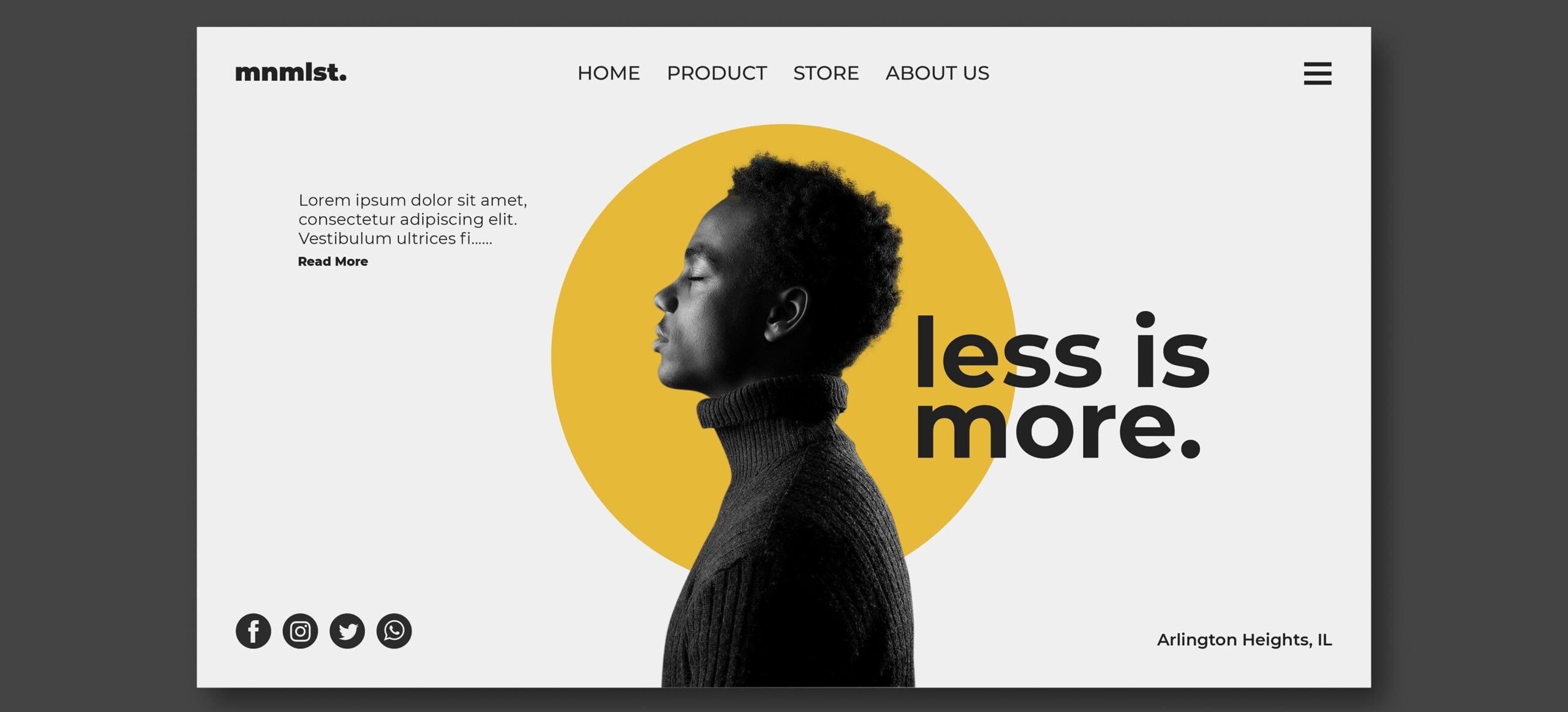You’ve got 15 seconds. Sometimes less. To capture the attention of your customers on your landing page and turn that consideration into a conversion. Your business’ landing page is vital to the process, being the first point of contact when a customer clicks on your weblink. Unlike your website’s homepage that provides a general overview of your business, a landing page is there to sell, and sell fast. You’ve got an average of 15 seconds to generate interest and win customers over. If you want to increase engagement, consideration and conversion – you need to hone in on the performance of your landing page. Read further to discover where to start.
1. Clear and captivating copy
It might sound obvious, but in order to build a successful landing page you must know and understand your business to the core.
This includes:
- What services/products do you sell?
- What’s your unique selling proposition (USP)?
- Do you have a tagline?
- Who is your target audience?
- What special offer/s do you have?
Knowing your business inside and out is vital to building an effective landing page.
From here, it’s making your copy as clear and concise as possible. You want to use simple yet clever language to draw your customers in. Your landing page is not the place to show off your list of fancy pompous words – people and customers want a direct, easy and relatable experience. Don’t alienate customers by your choice of terminology.
Keeping with the tone of voice your customers know and love, your landing page needs to be short, fast and loud. Failure to write clear and captivating landing page copy will result in the customer clicking out of your website and into a competitor.

2. Style and design
Your business’ website is just as important as the physical store. Since 2010, internet users have tripled with more people relying on connecting with businesses online rather than in-person. This means, your website stands as your brand’s identity. If your website is visually unappealing, lacks good copywriting or is unclear – this will reflect poorly on your business. From the landing page, to the product descriptions, to the blog – your website is everything.
Your landing page is essentially a modern day sales person, it must be well dressed, well spoken, friendly and knowledgeable. If a salesperson knocks on your door with food spilled on their shirt – it’s going to affect poorly on the business they’re representing. Clean up your landing page, and watch as those conversions increase.
There’s lots of different approaches you can take for the style and design of your landing page. What’s most important is you keep it within your brand guidelines and build your layout to be as user friendly as possible. If you’re unsure what your brand guidelines are or, you need help with your branding in general – contact a professional *cough cough* Cloud Cartel. We can help you.
3. Call to actions (CTAs)
Considering how little time you have to grab the attention of your customers, your call to action could be the most important component to your landing page. A call to action is a short phrase or tag line that entices readers to take action on your website. Often, this is signing up to a newsletter, making an enquiry or signing up to a special deal or offer.
Depending on your target audience and the goal you’re trying to achieve, will change the call to action messaging. Some examples of call to actions are:
Dinnerly’s – “Start cooking now”
Vegemite’s – “Shop now” and “Learn more”
Spotify’s – “Get Spotify free”
Penfold’s – “Discover More”
These are (very) short phrases that are linked to the said action. Clicking on the “start cooking now” takes you to signing up their plans, Penfold’s “Discover More” takes you to the product’s page, and you get the idea. Present this call to action towards the top of the landing page clearly and ensure it’s linked appropriately.

4. Build Trust
What makes a customer click your call to action or click out of your website? TRUST.
Trust plays an immense role in winning over your customers. If your viewers are looking to make a purchase they need to know their money is going to a business that’s reliable, dependable and going to deliver a high quality product/service.
Building trust on your landing page is the secret ingredient to winning over your customers. To succeed in this, below we’ve listed the factors that work with one another to create a harmonious image.
- Make sure your website is secure – if your customer sees an insecure security symbol, then they’ll be unlikely to enter any of their personal information on the page.
- Keep on brand – with the copy, style and design as mentioned. Holding a consistent identity is crucial in holding onto current customers and earning the trust of new ones.
- Add personality – people like to work with, well, people! Don’t be afraid to sprinkle your personality throughout the landing page.
- Option to explore more about the business – as customers scroll through your landing page, offer useful information that builds background on the brand and your offerings. Options to click on different calls to action will give more options to the viewer and allow them to get to know your business in different ways.
Following these directions will greatly improve your customer experience online and result in more enquiries, calls and conversions.
5. Mobile Friendly
If your landing page isn’t mobile friendly, then you’re ignoring more than 50% of your customer base. Yep, more than half. This begs the question – should you be making your landing page for mobiles first and desktops second? Quite possibly.
It’s important to work with a professional web development team to build an interactive landing page that’s going to accommodate desktop, smartphone, notepad and any other device that customers will be using to view your landing page.
If your landing page (and entire website) isn’t interactive and doesn’t accommodate to all digital devices, you risk losing that customer forever. Yep, forever. 88% of online shoppers say they won’t return to a website once they’ve had a bad online experience. What constitutes bad can be as small as a slow load speed to as big as being met with a 404 error. Avoid losing customers by trying to cut corners – invest in your website.

6. Easy to use form
Every step of the landing page needs to be easy and user friendly, this includes how the customer contacts you. The form that your customer fills out should be minimal yet useful so you’re able to understand their request and respond to their need effectively.
Follow these quick tips to make sure you’re optimising your website’s form:
- Be simple and straightforward – don’t add unnecessary questions. When it comes to the contact form, make it as efficient as possible. You’ve nearly got your customer to the next stage in the funnel, distracting the customer by asking them an extra question could easily impact their decision to hit “enquire.”
- Be clever with the layout – arrange your fields from easiest to hardest (name -> email -> message) they’ll be more likely to commit to the message once they’ve already entered their name and email.
- Field validation – make sure to integrate an inline form field validation so that information customers are entering is legit and valid. Nothing worse than getting an exciting lead to find out that the email they’ve entered has no “@” symbol.
- Use CAPTCHAs – limit the amount of spam and bot messages you receive by including security features i.e. ticking a box, deciphering the image etc.
There’s a lot to remember when it comes to building a form. Make the process easier by installing the WordPress plugin Gravity Forms. This is our go-to plugin for WordPress websites and makes the form process incredibly easy, efficient and reliable – both for the customer and for you. If you’re one of our customers (or, you would like to be, give us a call to get Gravity Forms installed on your website).
7. Tailor your landing pages to your target
Tailoring your landing pages to your customer segments is a highly effective way to cater your messaging to your target audience. For example, if you’re a business that sells coffee beans to people who make coffee at home as well as wholesale to cafes and restaurants – your messaging and offerings are going to be wildly different. Creating two landing pages that caters to each target audience allows you to speak directly to their needs and generate more leads. After you’ve created your landing pages it’s of course essential that you then market the landing pages to the correct audiences.

Contact our team for more information
We don’t like to brag but we’re experts at building landing pages. To put it simply, website development for increasing conversions is our jam. From branding, to design, website copy, SEO and all of those tedious bits and bobs that build an effective landing page – that’s our speciality.
If you’re looking to optimise your current landing page or, you need to build one – contact our team. We’re always happy to have a chat over the phone to discuss your questions and concerns and how we can help.




